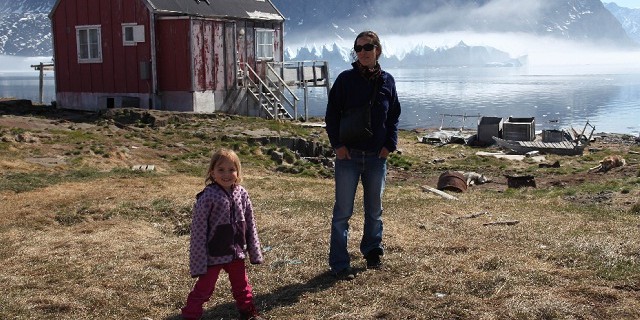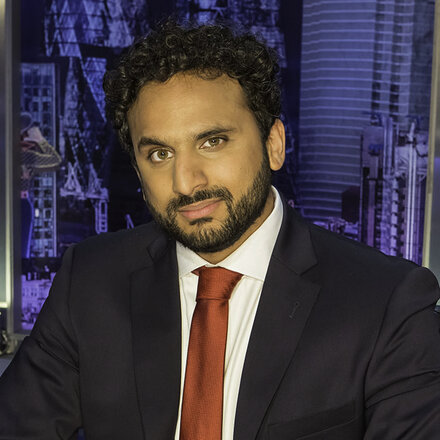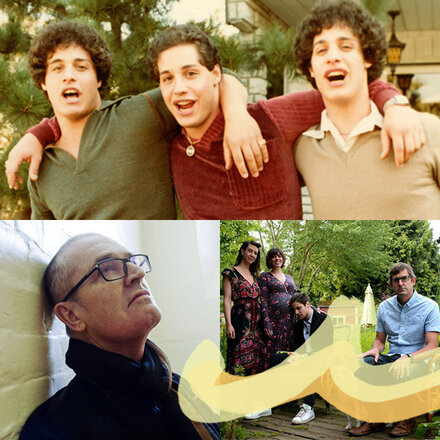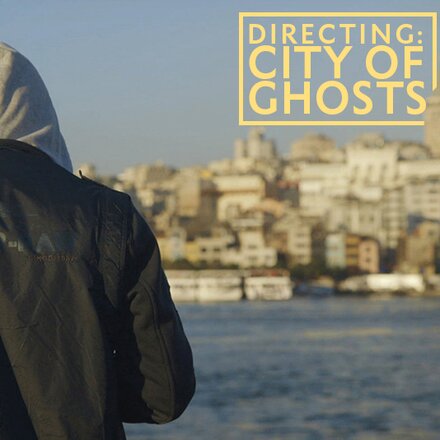
Sarah Gavron: Interview
The British director of Brick Lane talks about the challenges in filming her new documentary, Village at the End of the World, and offers tips to aspiring documentarians.
Published 18 October 2012
Words by Quentin Falk
There could hardly be any greater contrast than between the cosmopolitan hustle-and-bustle of director Sarah Gavron’s last fiction feature, Brick Lane (2007), and the sheer, faraway, tranquillity of her latest project, whose evocative title perhaps says it all - Village at the End of the World (2012).
Following her acclaimed BAFTA-nominated adaptation of Monica Ali’s bestseller, which spanned the worlds of Bangladesh and East London, Gavron, together with her cinematographer husband David Katznelson, has now turned her attention instead to the often frozen wastes of a tiny hamlet in the remote North West of Greenland: Niaqornat, population 59.
However, the location, and even the subject matter, of her first major documentary isn’t quite as random as it may first sound.
Katznelson, who lit Gavron’s first full-length TV drama, This Little Life (2003) – which earned her a BAFTA for New Director (Fiction) – is Danish-born and had worked on a 60-minute documentary called Arctic Crime and Punishment (2002), set in Greenland. A BAFTA winner in his own right for the TV drama, Shoot the Messenger (2006), he later returned to the world’s biggest island on a five-week expedition with chums crossing the inland ice for five weeks.
Fired up by this, and with his wife now a mother-of-two and developing new feature projects post-Brick Lane, the couple, together with their young children, decided to get away from it all on an adventure of their own to the Far North with, says Gavron, “only half an idea that maybe a film might grow out of it.
“David had said why didn’t we go where he’d been and seek out the hamlets where traditional Greenlandic life really takes place. We just showed up, talked to people at the heliports and asked them where they thought we should go. They suggested three or four different hamlets. You just arrive. There are no hotels or restaurants; you sleep in a kind of communal house in sleeping bags.
"Never take 'no' for an answer. You have to keep persevering - that's a key word in documentary. It's hard work and you must keep going."
“When we eventually got to Niaqornat, we quickly met a man who was the sewage collector in our film and the only one who could speak English. He loves having visitors and was our interpreter on that first visit back in 2009. Basically we just hung out there without a camera and watched ordinary life before, slowly, beginning to think that there was possibly a film which might touch on bigger issues and lead to a larger narrative.
“This is a part of the world that you don’t often see apart from in nature documentaries, and the natural world there is staggering, on a vast scale which really does make you tend to think humans are insignificant. What you don’t tend ever to see are the stories of the people themselves as their lives unfold.”
Their first trip lasted four weeks. Continues Gavron: “Having children with us meant we were particularly welcome; Greenlanders love children and it made us also appear very unthreatening. We first talked to the sewage collector about the idea for a film and after we left wrote the village a letter saying were thinking of coming back to discuss it. After that, we entered into some email correspondence. When we did return for another month we addressed a village meeting at which we asked people whether they were prepared to be involved.” The response was enthusiastic.
The initial idea – “slightly naively at the outset” – was to chart their lives across a single year but “it was really a year and a half of their lives we ended up documenting. Now, three years later here we are, finally.”
Not a complete stranger to documentary, Gavron admits she first harboured ideas from her teens of going that route. After university she worked for a production company as a researcher then an assistant producer on a number of documentaries before later concentrating on fiction during her time at the National Film & Television School.
"Characters are the way into your story or world. In fiction you put a lot of energy into writing and casting your characters; in a way you have to 'cast' them in documentary too."
Doubling as sound recordist, Gavron, with David as co-director and a voice heard off-camera asking very occasional questions, notes: “I guess I did always harbour the thought of one day returning to documentary as it throws up a whole new set of concerns, ideas and challenges. Unlike a script-led film, here the project evolved. We started it frankly not knowing exactly what it was going to be and the whole challenge of the process has been finding a shape and structuring it.
“The equivalent of script development with documentaries happens in the edit; it’s the opposite way round, of course, with fiction drama; and that’s why the editing for this has been so protracted. We wanted certain things to happen but couldn’t necessarily bank on them, either in the case of the economic future of the hamlet or regarding certain characters we were following.
“Which is why I’m really looking forward to getting back to fiction; I’m currently developing a project about the most extreme end of the Suffragettes’ movement with Abi Morgan who scripted Brick Lane – where you can play God a bit more, can control events, and ask actors to do what you want them to do.”
Indeed, it’s from her fiction folio that Gavron selects her “hardest” and “proudest” scenes.
“The hardest? Filming in West Bengal for the opening scene of Brick Lane. We were in a small, rural village, so hot that we were all bathed in sweat from the moment we stepped out of the van. From a cherry picker, we were filming the two young sisters running through a paddy field, calling to one another.
“A local crew was working with us – they were hugely experienced, but unused to sync sound. Pushed for time, we kept having to roll again, as there was a lot of noise and talking throughout each take. Finally we had quiet and went for a final take, when suddenly one of the girls stopped running midway. I kept the camera rolling, calling to her to keep going – crew and villagers, joined in my calls. But she wouldn’t budge. It turned out she had a very valid reason; there was a large, poisonous snake in her path.
"The equivalent of script development with documentaries happens in the edit. We wanted certain things to happen but couldn't necessarily bank on them."
“My proudest scene? During This Little Life, a television feature about a woman who has a premature baby. We had a number of important scenes where we needed the audience to connect with the baby in the incubator.
“We shot footage of our actors working with a model, animatronic baby on a set and then afterwards, the shoot went, documentary style, into a real ward to film premature babies under very stressful circumstances.
“We couldn’t interrupt or influence the doctors’ or babies’ movements in anyway, so we just had to grab any shots we could. It felt like an impossible task to cut these two lots of footage together and make a convincing single baby… but when we showed it to audiences, they believed it.”
Gavron describes her documentary experience this time round as a “steep learning curve. However, I knew from my years of researching that you never take ‘no’ for an answer. You have to keep persevering – that’s a key word in documentary. It’s hard work and you must keep going.
“What I’ve also learned, and I would pass on as advice, is that you’ve got to find characters because they will be the way into your story or world. In fiction film you put a lot of energy into writing and casting your characters, and in a way you have to ‘cast’ them in documentary, too.
“If it’s an open-ended story rather than a look-back at a specific historical event with a middle, beginning and end, you must devote enough time to working out a proper narrative. It’s a challenge, you may put yourself in peril but it can be very exciting.”
Village at the End of the World is screening at the London Film Festival on 18 and 20 October.
Gavron’s Guru Picks:
I was inspired by this fantastic resource where you can read and watch interviews with many of the greatest filmmakers of our time. As a director it is rare to share experiences with other directors while working, so these accounts are invaluable.
I loved hearing stories from first films onwards: the way in which The Battle of Algiers influenced Paul Greengrass; how Mira Nair moved from documentaries to making Salaam Bombay where she could control the frame and world.a






